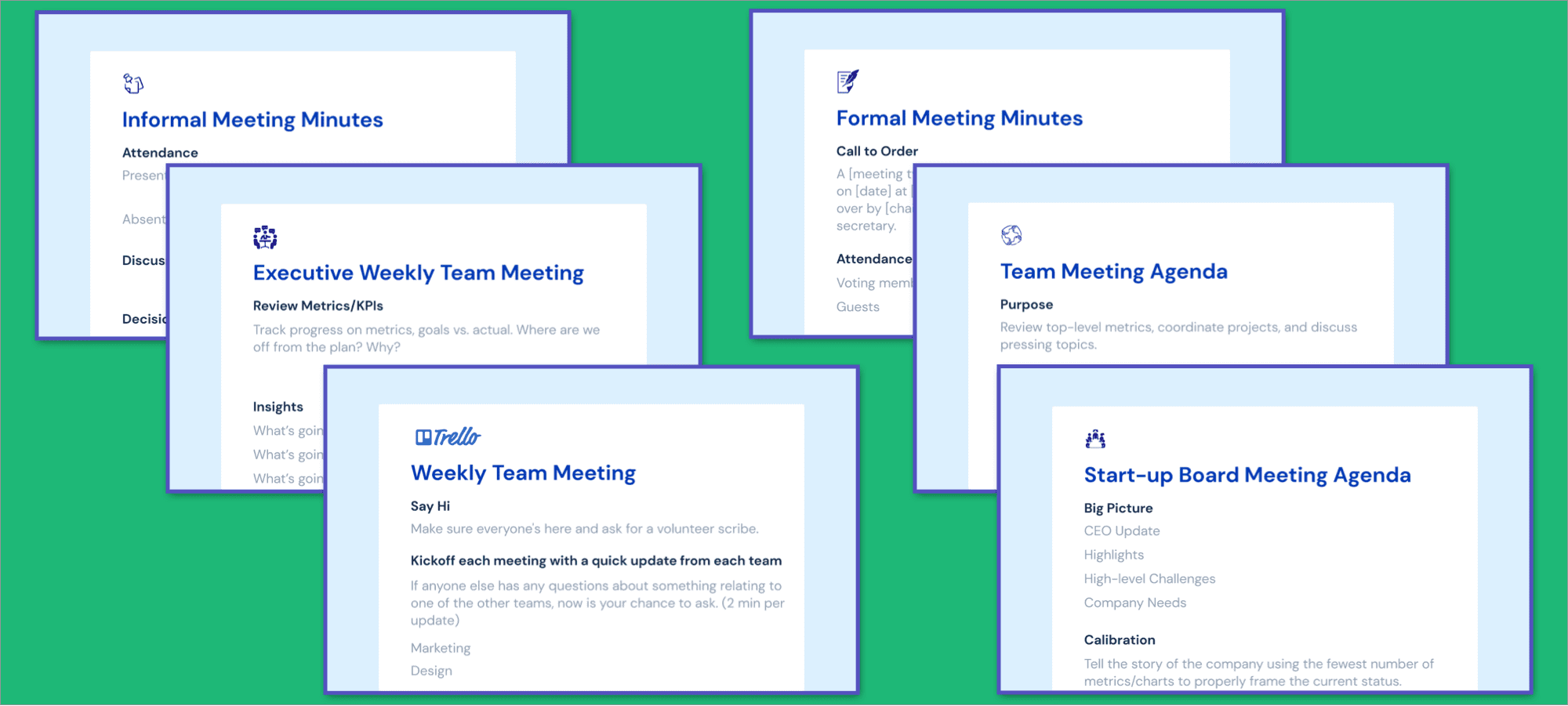Do you have too many meetings? Or not enough high-quality ones? Maybe it's both. Either way, you're not alone; 47% of workers think meetings are a waste of time where nothing gets accomplished. It's a confounding dilemma that several modern organizations face.
Fortunately, the roots of this problem can usually be traced back to the same sources, regardless of your industry. Here, we examine some of the most common obstacles preventing both startups and enterprises from running successful meetings. We also take a look at how you can solve them right now.
Your meetings are not led effectively
Are your meetings unstructured? Do they stretch on for hours with little insight to show for it? If these symptoms sound familiar, it could be the result of ineffective meeting leading. This can be a difficult topic to broach, especially if your meeting leader is your boss.
Remember, you always have the right to ask how meeting attendees like yourself could participate more effectively. Use this to improve the situation. For instance, it never hurts to be upfront and ask questions to clarify expectations on what you should be contributing. This not only serves to elucidate the main reasons for the meeting but also shines a light on what input could help the matter.
You can take this a step further and offer to prepare meeting agendas for your boss. He or she may even thank you for doing so. Chances are good that if your meetings are not being led effectively, it's because the meeting leader is overwhelmed.
Agendas will differ from one organization to the next, but here are a few factors to consider across the board:
- Meeting objectives
- Relevant context from previous meetings
- Attendees
- Notes for detailing any discussion
- Key takeaways
- Next steps
- Questions and resolutions
Don't forget to ask your group for input. And try to get the agenda to all meeting attendees beforehand if possible. If you're having trouble getting started, check out this template we put together with our friends from Atlassian. It'll help you get a great head-start on implementing your own effective meeting agenda.
Only a few people contribute to the conversation
If you've got a 30-minute meeting that 10 people are attending, does everyone really get enough time to voice their input? Oftentimes, only a few people dominate a meeting conversation, potentially wasting time and closing off possibilities of finding the best way to approach a subject. Broadening participation almost always leads to unique insights and solutions to problems.

Here's how you can foster a more open floor in your meetings:
At the beginning of the meeting:
- Be straightforward and tell your attendees that you want broad participation. If someone feels they have something to contribute to any discussed topic, they should.
- Let them know you will not leave a topic if anyone still has input on it.
- Make it a priority for everyone to really focus on and listen to one another. Often, insights can come from something someone else brings up.
During the meeting:
- Practice what you preach. Pay full attention to each person speaking and always let them complete their thoughts.
- If someone gets cut off or interrupted, always circle back to them and let them finish what they were saying.
After the meeting:
- If you're still concerned that some people are speaking much more often or longer than they should be, simply ask them to join in on your initiative. Let them know you're seeking more balance in their meetings and encourage them to invite others who haven't participated to share their thoughts on a topic.
Too much time is spent recapping redundant information
Do you feel like you're having the same conversations over and over again? It's not uncommon for companies to spend 10 to 15 minutes of every meeting reviewing information that can (or has been) communicated by other means such as email. The problem is that this review could comprise a quarter of the entire meeting time.
The result is no real issues get discussed, and no adequate action gets taken. When this happens, it's usually due to closed-off information silos. Gone are the days of safeguarding select information from certain employees. Modern companies rely on streamlining information flow; in turn, this streamlines effective solution execution.
The easiest way to do this is through transparency. And thanks to technology, this can be easily implemented. There are many purpose-designed products and software available now to help you share your meeting notes and agendas. Consider trying out a few and see what works best to keep your team aligned.
To give you a good idea of what you should look for, here's how Hugo empowers employees by making agendas shareable and actionable.
Ready to make your meetings matter again?
Meetings have become more important than ever before. They usually make the difference between business success and failure. By helping you address some of the most common issues plaguing companies around the world, we hope you're ready to enhance your own meetings.
Don't let unproductive meetings slow you down
See the impact of fewer, shorter meetings, increased accountability, and enhanced productivity with Fellow.
Get started with Fellow today




